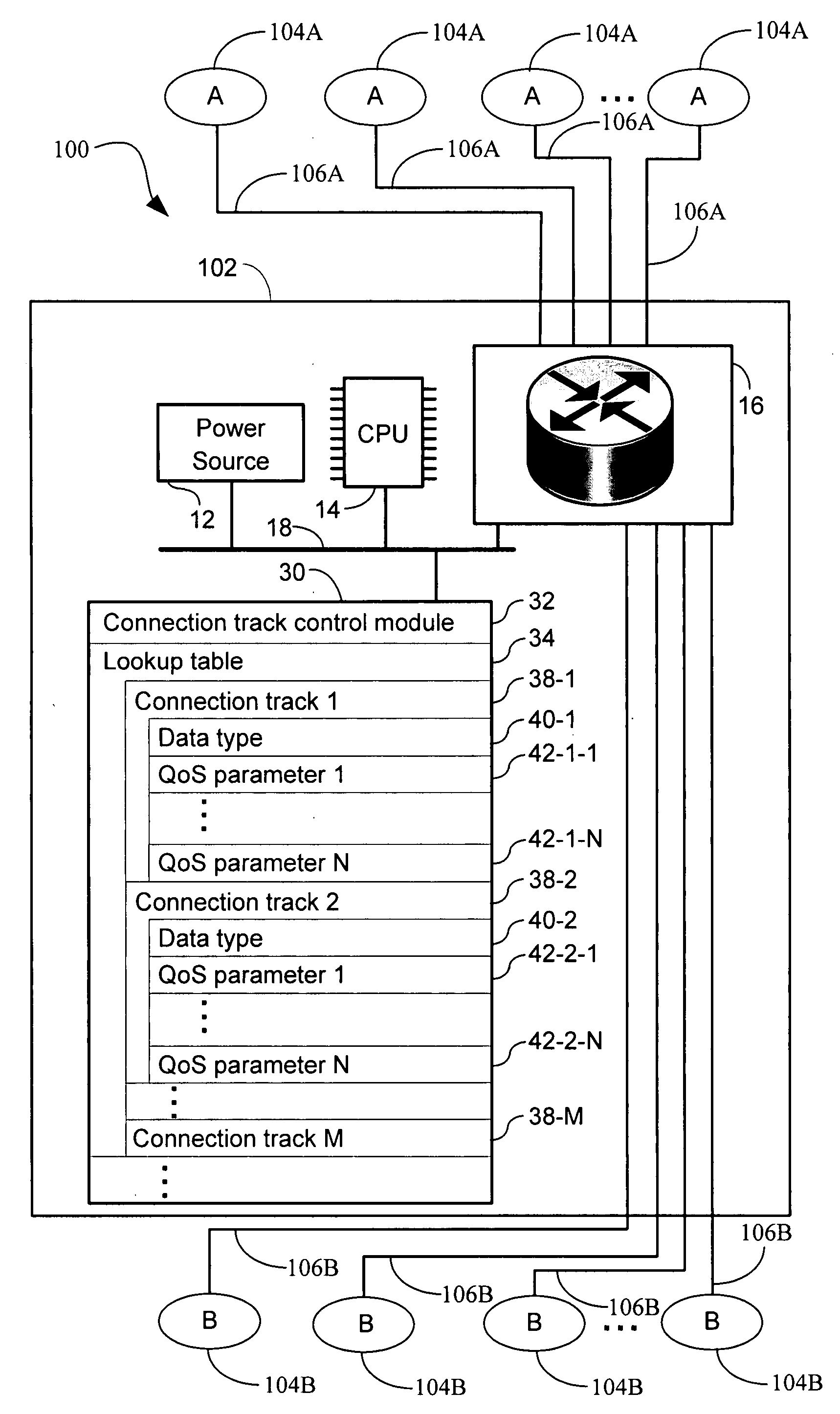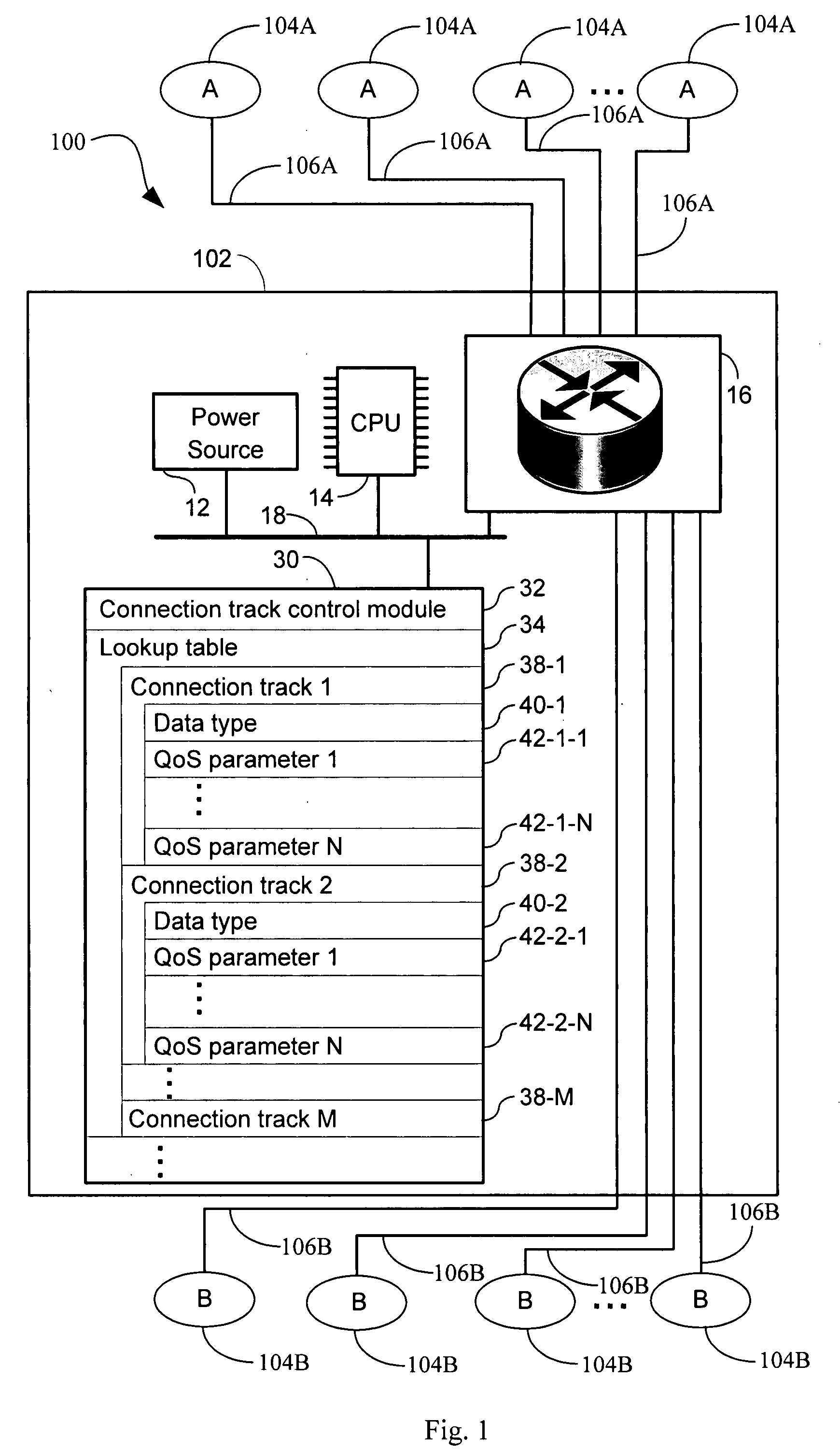Systems and methods for dynamic quality of service
a dynamic and service technology, applied in the field of systems and methods for dynamic qos routing, can solve the problems of affecting the qos of such transmissions, the inability to call for high bandwidth streaming services like video, and the importance of controlling the total usage and carrier expense, so as to improve the performance of the router and improve the control of the data being routed
- Summary
- Abstract
- Description
- Claims
- Application Information
AI Technical Summary
Problems solved by technology
Method used
Image
Examples
Embodiment Construction
[0030]One or more header fields of network layer or transport layer packets, received by a router, are examined and, based on the values found in the header fields, assigned to connection tracks. For example, in some embodiments, transmission control packets (TCP) are received and the source port, destination port, and / or sequence number headers are examined. TCP packets that have the same source port, destination port, and a unique sequence number are assigned to the same connection track. In this manner, those packets that are communicating the same message are assigned to the same connection track. Then, advantageously, the data type of the message carried by the connection track is determined and, from this data type, QoS parameters are assigned to the connection track.
[0031]In some embodiments, the first attempt to determine the data type of the message carried by the connection track comprises attempting to identify an application protocol used within one or more packets in th...
PUM
 Login to View More
Login to View More Abstract
Description
Claims
Application Information
 Login to View More
Login to View More - R&D
- Intellectual Property
- Life Sciences
- Materials
- Tech Scout
- Unparalleled Data Quality
- Higher Quality Content
- 60% Fewer Hallucinations
Browse by: Latest US Patents, China's latest patents, Technical Efficacy Thesaurus, Application Domain, Technology Topic, Popular Technical Reports.
© 2025 PatSnap. All rights reserved.Legal|Privacy policy|Modern Slavery Act Transparency Statement|Sitemap|About US| Contact US: help@patsnap.com



